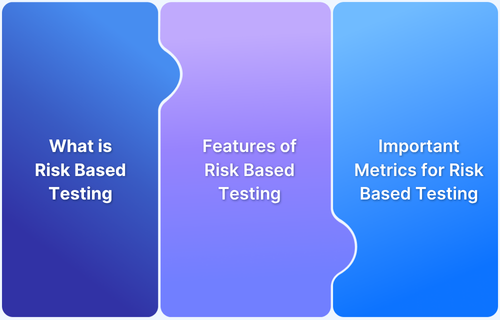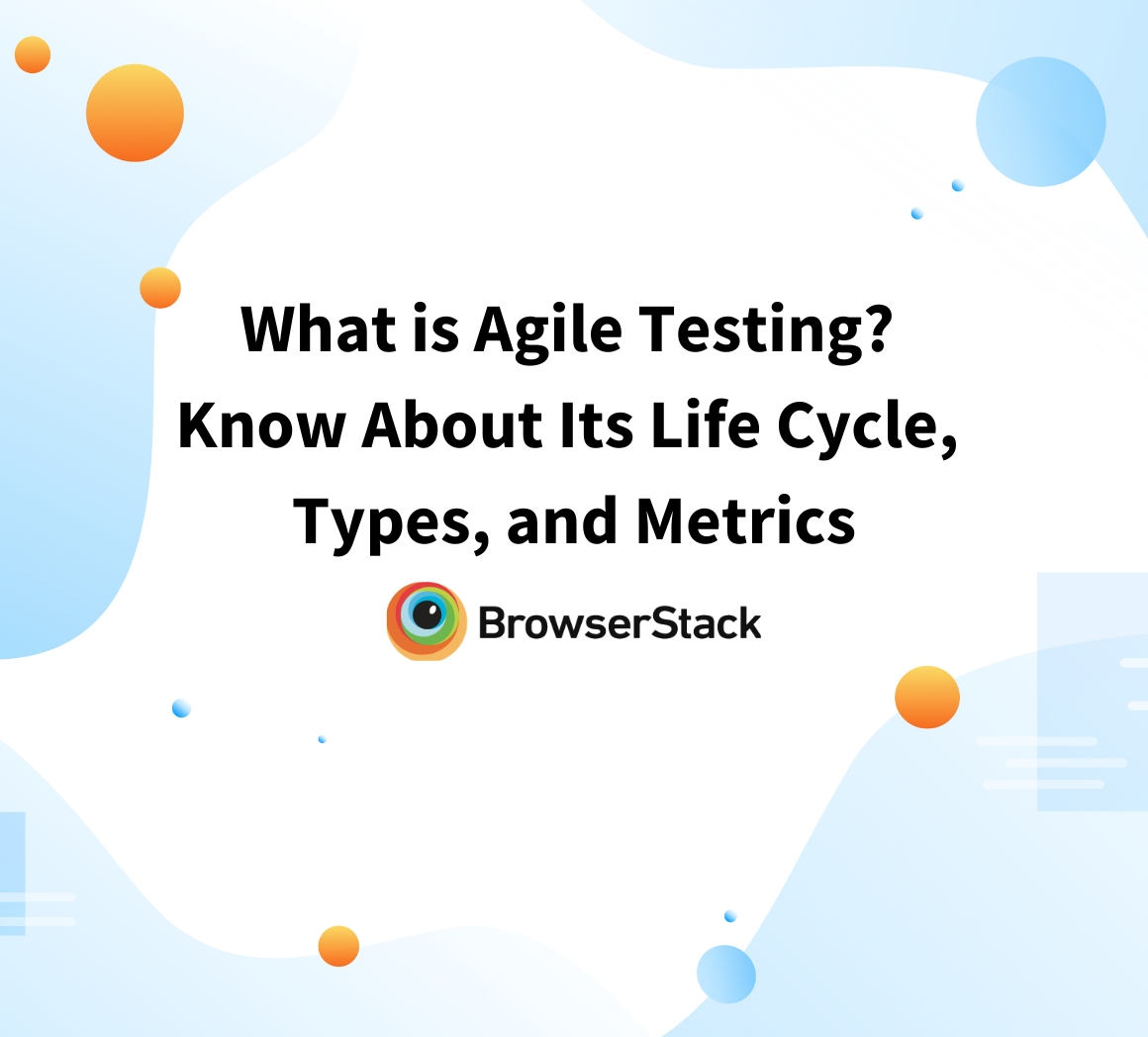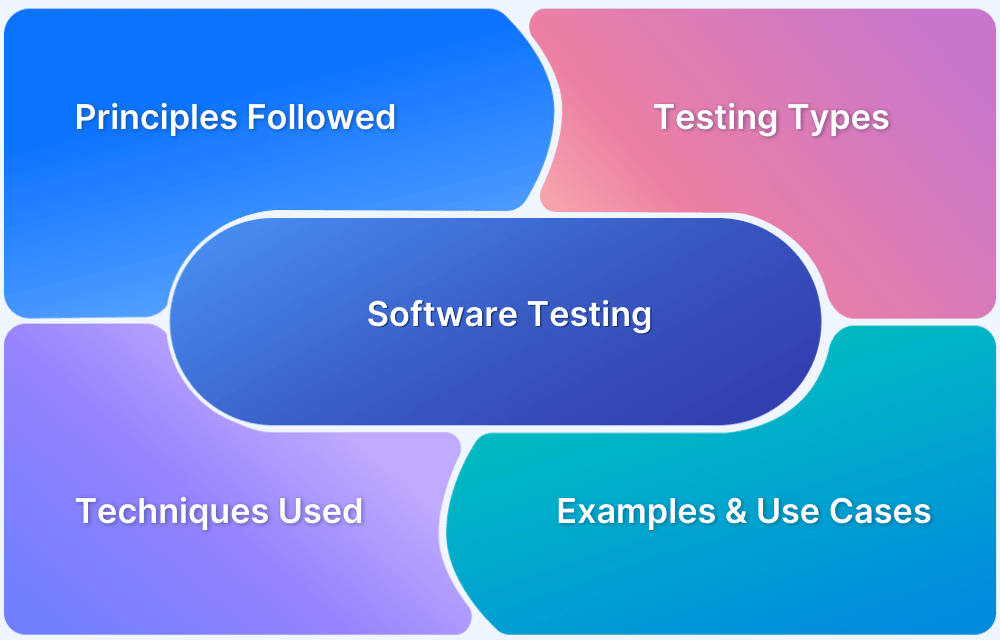What is Context-Driven Testing?
By Sanghita Ganguly, Community Contributor - December 3, 2024
Context-driven testing is a type of software testing that strongly focuses on the context and the unique needs of a specific project. While traditional testing methods follow a rigid protocol, context-driven testing is more flexible and adapts to the unique requirements of a project.
This guide explores context-driven testing in detail and covers its importance, principles, best practices, and more.
What is Context-Driven Testing [With Example]
Context-driven testing focuses on using dynamic testing approaches in different conditions.
This type of testing emphasizes the unique context of the projects instead of relying on a one-size-fits-all approach, as seen in traditional testing methods. In such a method, the testers are suggested to create their test specifications, test records, and test targets based on the specifics of a given circumstance.
In short, context-driven testing utilizes skills and decision-making based on the task at hand rather than on pre-defined methodologies.
Example of Context-driven testing
Suppose your team is testing a mobile banking app that should function across multiple devices and operating systems. In context-driven testing, the testing process would depend on unique aspects like the project goal, team skillset, time constraints, technology, and more.
Here’s how the approach would be:
- If time is limited, the focus can be on testing the most critical features, such as transactions and user authentication.
- If the team consists of personnels of different levels of experience, senior testers will handle complex tasks like security testing, while juniors handle less complex tasks like usability testing.
- The test strategies applied to different devices will differ, considering their unique behavior.
- The team will conduct risk-based testing. Thorough testing will be done for high-risk areas like payment processing, while quick, exploratory tests will be conducted for less critical features.
In traditional testing, however, the testers follow a structured, pre-defined process
that focuses on covering all features equally according to the requirements. Unlike context-driven testing, traditional methods require the entire development process to be complete before testing.
Read more: What is Non-Functional Testing?
7 Basic Principles of Context-Driven Testing
The founders of the context-driven school are Cem Kaner, Brian Marick, James Bach, and Bret Pettichord, who have given seven basic principles in context-driven testing:
1. The value of any practice depends on its context
The first principle talks about the uniqueness of every business, project, and software application and stresses the importance of recognizing each project’s distinct qualities. It points out that the same solution may not work across different projects and can result in ineffective testing—i.e., even if you have experience testing mobile apps, each new app should be seen as a different project.
2. There are good Practices In context, but there are no best practices
Since projects and test scenarios have unique qualities and aspects, one can’t depend on a “best” practice for all of them. The team can follow a set of good practices depending on the context of the test.
3. Over time, projects unfold in ways that are often unpredictable
The software development process is dynamic in nature. The testing journey, too, is unpredictable. It keeps evolving according to the challenges and needs of the specific project. The context-driven approach helps to tackle this unpredictability by adapting to the changes.
4. Good software testing is a challenging and intellectual process
Software testing needs more than just strong technical skills. In addition to strong technical expertise, testers should have an analytical mindset, rational thinking, and creativity to solve problems in a specific context.
5. The right steps can be taken at the right time only via cooperative judgment and skills exercised during the project
The principle highlights the need to collaboratively apply professional expertise and judgment throughout the project lifecycle. The team should work together and leverage their collective skills to make timely decisions.
6. People working together are crucial for any project’s context
Every single person involved in context-driven testing is of the utmost importance. You should collaborate effectively with every stakeholder and consider their perspectives and skills to facilitate the testing procedure.
7. The product is a solution. If the problem isn’t solved, it means the product doesn’t work.
Your product should solve the pain points of your users. A software product’s success is its ability to meet a certain requirement or solve a specific problem it was designed for.
Why is Context-Driven Testing important?
Context-driven testing is quite different from standard testing. It tests the software as per its requirements and makes customized rules and plans for assessment. On the other hand, standard testing comes with a preset testing methodology to test any type of software. It is modern, advanced, and customized testing that first analyzes the software and its requirements for complete assessments with a set of values.
It analyzes the software before testing to understand the situation like:
- Whether the software has documented or undocumented requirements
- Testing and development teams belong to different companies.
- Fixed schedules or flexible schedules
- Availability or composition of the testing team
- Type of the project
There are many more parameters that would uplift the advantages of context driven testing by asking these questions and then starting planning for testing. This approach is more suitable, and logical, and has advantages for QA testers than predefined testing.
By using context-driven testing, QA testers can get many realistic answers before testing the software. These are –
- Clarify the objectives
- Product evaluation
- Risk analysis associated with the product
- Plan the test strategy
- Supervise the major test planning challenges
- Share the idea
- Set up logistics
When QA testers plan to do software testing but don’t know about the objective, end goals, risks, and other factors, then context-driven testing is a great alternative to test the software with complete process and planning.
Follow-Up Read: Top 10 Skills of a Proficient QA Manager
How Does Context-Driven Testing Work?
Instead of going through a fixed process, context-driven testing adapts to the specific circumstances of a project. The working of this type of testing is based on the following factors:
- Availability and skills of the entire testing team
- Whether the development and testing teams belong to the same or different companies
- The flexibility of schedules
- Evolving or documented needs
- Testing tools and infrastructure access
The idea is to evaluate the project’s context via relevant questions (for example: what, why, who, and when) before curating a test plan. This approach ensures that the testing is adaptable to context-based requirements and produces the best possible outcomes.
How to Perform Context-Driven Testing?
Context-driven testing can be performed via two main approaches:
Manual Context-Driven Testing
Through this approach, the testers evaluate the software applications per the project’s unique context by performing exploratory tests. The testers use their domain knowledge to spot defects. Manual context-driven testing is useful when the requirements keep evolving and the software undergoes frequent modifications. Testers, therefore, maintain a flexible testing process.
Also Read: Manual Testing Tutorial for Beginners
Automated Context-Driven Testing
In automated context-driven testing, automation testing tools and scripts run tests customized to a project’s unique context. Automation can greatly increase testing efficiency as it executes repetitive and data-intensive tests in a faster, more consistent manner.
However, it requires a strong understanding of the context and objective of the project. This will help testers design and adapt the test scripts to align them with the project’s specific requirements.
To get the best results and facilitate seamless testing, make sure you use strong automation testing tools like BrowserStack Automate.
Workflow of Context-driven Testing
Here is a general workflow for any type of context-driven testing.
- Obtain detailed information about the project context, its objectives, audience, industry, tech stack, key stakeholders, expectations, priorities, and more.
- Determine the test objectives based on the gathered information and prioritize testing goals.
- Select the testing technique (like usability testing, risk-based testing, etc.) that aligns with the project’s context.
- Create and design test cases to cater to the project context. These test cases should cover key functionalities. potential risks etc. If you use automation testing, develop test scripts that are flexible to adapt to the context changes.
Why use BrowserStack for Context-Driven Testing
BrowserStack can facilitate context-driven testing seamlessly with its flexible and extensive capabilities, catering to specific project needs:
- Automation Testing: Run automated tests on a scalable cloud infrastructure and integrate them with tools like Selenium and Cypress, among others.
- Manual Testing: Execute manual tests and easily debug issues to deliver great user experiences with BrowserStack Live.
- Cross-browser and Real Device Testing: Run tests on a real device cloud and access 3500+ real device, browser, and OS combinations to see whether your app runs consistently across all real-user conditions.
- Powerful Debugging: Identify performance bottlenecks during user journeys using debugging tools like text logs, console logs, visual logs, video recordings, session replays, Appium logs, and more.
- Scalability: BrowserStack supports parallel testing and integrates seamlessly with CI/CD tools like Jenkins, Travis, CI, etc., to automate testing as part of the build process. This allows you to scale faster.
Best Practices for Performing Context-Driven Testing
- Put forth a lot of reasonable and high intent questions.
- Ask questions from the perspective of BA, QA, and DevOps. Without logical questions, it is difficult to understand the context of the project.
- Plan the test beforehand. Discuss the plans with the people that matter and take feedback so that you can get real insights.
- Make the adjustments accordingly. The software project doesn’t always go entirely as you would have expected. Be flexible and incorporate the changes.
- Don’t apply any of the practices without thinking logically. Applying practices blindly could jeopardize the entire project. Sometimes you might face a time crunch and you have to take a logical route out of it.
- The stakeholders should decide when the project should be terminated. Since they have the power and responsibility, they should also decide when the project should be over or closed.
Conclusion
Context-driven testing revolutionizes conventional testing methods by adopting a flexible, adaptive, and context-focused approach. By focusing on critical tasks and issues specific to the project, testers can optimize their testing strategy, leading to faster and more efficient testing and product development.
Tools like BrowserStack offer the ideal infrastructure for context-driven testing. They provide access to a vast real-device cloud and efficiently help you understand how your app works in different environments with no compromise on accuracy.
Frequently Asked Questions
1. What is the difference between context-driven and agile testing?
Context-driven testing and agile testing have different approaches. While context-driven testing focuses on adapting the testing efforts according to the project’s unique context, agile testing follows the Agile methodology’s iterative and collaborative approach, i.e., testing and development happen in sprints.
2. Are context-driven and exploratory testing the same?
Exploratory testing can be a part of context-driven testing, but it is not the same. In exploratory testing, testers explore the software without any predefined test cases. Domain knowledge and creativity are used here. On the other hand, context-driven testing is a comprehensive approach that includes the entire testing process, considering the project’s unique context.




